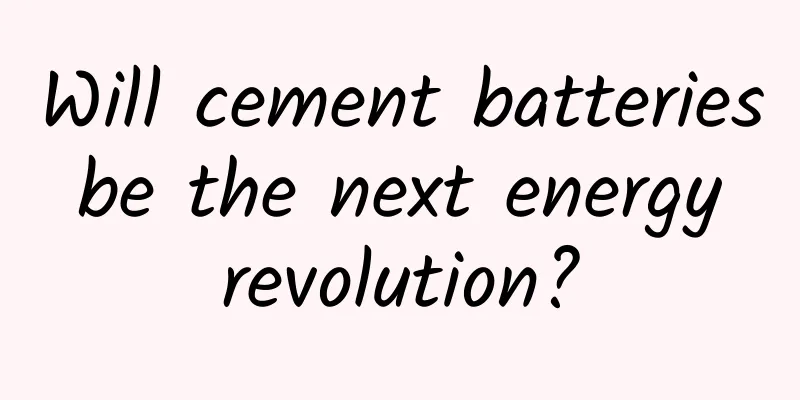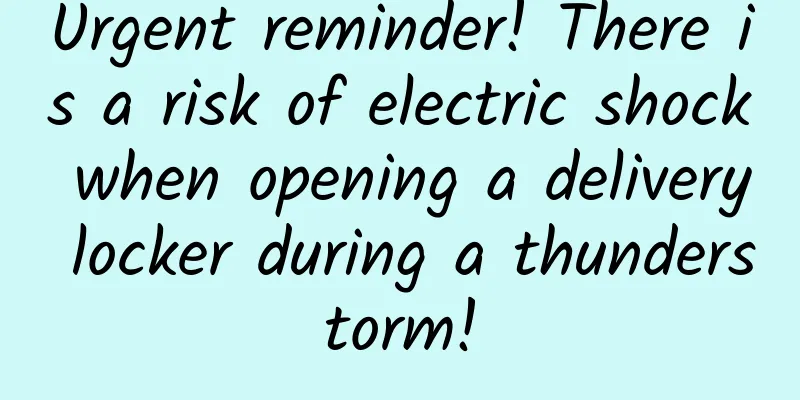Will cement batteries be the next energy revolution?

|
Written by Wang Yuesheng (PhD in Condensed Matter Physics) Batteries are no stranger to everyone, but have you ever heard of "cement batteries"? Cement is generally used as a building material in our daily lives. Can the buildings we live in also store electricity? What is a cement battery? What is the difference between it and the lithium-ion battery we usually use? Today, let's learn about cement batteries together. The cement battery was invented in 2021 by Dr. Emma Zhang, who works at Chalmers University of Technology in Sweden, while searching for future building materials. Its working principle is as follows (picture shows): The cement battery concept is actually very simple. First, a small amount of short carbon fibers is added to cement to form a cement-based mixture that is conductive and flexible. Then, a metal-coated carbon fiber mesh is embedded in the mixture as electrodes - iron as the anode and nickel as the cathode. This is the prototype of a cement-based battery. According to reports, the rechargeable cement battery produced by the researchers has an average energy density of 7 watt-hours per square meter, which is equivalent to two AA alkaline batteries (alkaline battery energy density 3.27 Wh). Compared with commercial lithium-ion batteries, the energy density of cement batteries is still low, but this limitation can be overcome because the area of the battery when used in a building is huge, that is, the area can be used to make up for the disadvantage of low energy density. In 2023, researchers at the Massachusetts Institute of Technology in the United States further optimized the cement battery. Their research no longer requires laying mesh electrodes in concrete, and the performance is higher than that of the Swedish team's device. The researchers used a mixture of water, cement and carbon black, and the added carbon black played the role of conductive wires. After the cement reacted with water, these linear structures acted like a bridge connecting the two plates, making the entire mixture conductive. In this way, a supercapacitor energy storage device is created, which is expected to power homes. We mentioned cement batteries before, and now we mention supercapacitors. In fact, the basic principle of cement batteries is capacitors. So what are capacitors, how do supercapacitors work, and what is the difference between them and traditional lithium-ion batteries? The so-called supercapacitor is an energy storage system that has become increasingly popular in recent years. Just like batteries, supercapacitors also have positive and negative electrodes separated by an electrolyte. Supercapacitor working principle When charging, the positive electrode material gradually accumulates positive charge, and the negative electrode material gradually accumulates negative charge. Under the electrostatic attraction of the accumulated charges on the electrodes, the surface of the positive electrode material will absorb negative ions in the electrolyte, and the surface of the negative electrode material will absorb positive ions in the electrolyte. This energy storage method is called "double-layer energy storage mechanism", which is similar to the electric field formed between two charged plates. The working principle of traditional lithium-ion batteries is a bit like a rocking chair. When charging, the potential of the positive electrode gradually increases, and the potential of the negative electrode gradually decreases. Under the action of the potential difference between the positive and negative electrodes, the positive and negative electrode materials undergo redox reactions. Because it stores and releases energy through chemical reactions, this energy storage method is called "chemical energy storage mechanism." Since the charging and discharging of supercapacitors is a purely physical process, its charging and discharging process is very fast compared to lithium batteries. In addition, supercapacitors have the advantages of being able to store a large amount of electricity in a small volume; having a long cycle life and being able to be repeatedly charged and discharged hundreds of thousands of times; having good ultra-low temperature characteristics; and having strong high current discharge capability. However, everything has its pros and cons. It is not possible to use supercapacitors to universally replace lithium batteries at present, because the current production of supercapacitors is not technically complete and the production cost is high. In addition, its energy density is low and it cannot store more energy per unit volume. It is generally used in situations where rapid discharge and charging are required, such as flashlights, filtering and coupling in electronic circuits, etc. If pure electric vehicles use supercapacitors instead, the entire vehicle will have to be equipped with larger supercapacitors. Another point is that supercapacitors are not resistant to high temperatures and cannot be placed in a humid environment, otherwise it will affect normal operation or even cause damage. Supercapacitors charge much faster than lithium-ion batteries and are safer than lithium-ion batteries. Supercapacitors have now reached the stage of expanding their application range and industrialization. Supercapacitors, with their excellent characteristics, can partially or completely replace traditional chemical batteries for vehicle traction power and starting energy, and have a wider range of uses than traditional chemical batteries. Due to its extremely low cost, capacitor-based cement-based batteries have a very broad application space. For example, in house construction, the solar panels on the roof are connected by cables, and the foundation made of this material can be used to store solar energy equivalent to the amount used by the house in a day. The house will be transformed into a huge power bank, storing energy as needed. Although it is still in its early stages, the storage capacity can power a 10-watt LED bulb for 30 hours, but the impact on future scalability and integration into the built environment is significant. The MIT team's research also found that the more carbon black is added, the more energy the supercapacitor can store, but the strength of the concrete structure will also decrease, so different proportions of carbon black can be added to create different concrete "batteries" according to the required strength of the concrete structure. Not only that, in wind farms, it can be used for the base of wind turbines, and this concrete can also be used to make roads, which can provide contactless charging for electric vehicles when they pass through the road surface. However, cement batteries also have some inherent disadvantages of supercapacitors, such as insufficient power storage and low operating voltage. As long as these difficulties are overcome, "concrete batteries" will be promising. Many people's "homes" can also become small power stations. To be honest, I am looking forward to this day. Special Tips 1. Go to the "Featured Column" at the bottom of the menu of the "Fanpu" WeChat public account to read a series of popular science articles on different topics. 2. Fanpu provides a function to search articles by month. Follow the official account and reply with the four-digit year + month, such as "1903", to get the article index for March 2019, and so on. Copyright statement: Personal forwarding is welcome. Any form of media or organization is not allowed to reprint or excerpt without authorization. For reprint authorization, please contact the backstage of the "Fanpu" WeChat public account. |
Recommend
Apple, the big brother, takes the lead in smartphones changing from hard to soft
Last week, Apple did something unconventional and...
Android fragmentation report released
According to foreign media reports, Android fragm...
Take a bite of the pagoda vegetable and the fractal secret behind it is...
As the weather warms up, I put away my thick cott...
Android is not secure, Google is not clear
The twenty-six letters of the alphabet have all b...
Smart products are not a panacea. Home appliance companies should not blindly transform.
The idea of smart home appliances has been prop...
Can Haier's "U+ Smart Life" ignite the huge smart home market?
As a major development direction of the future In...
User operation: How to balance the effect and cost of customer acquisition and retention?
An old reader asked this question: Can we talk ab...
Are there bears in the Gobi Desert? Yes, but not many
When talking about the Gobi Desert , many people ...
If you work in the Internet industry, do you really understand traffic analysis?
In my current job, I come into contact with many ...
iPhone 6 launch in China is unlikely this month
The much-anticipated iPhone 6 and iPhone 6 plus w...
Case review | Cold start of a new project, clever use of the community to reach 100,000 users in 10 days
The pyramid was not built in a day, and the secre...
Event promotion: Improve the conversion rate of offline activities?
This article will use offline activity cases to a...
Is autumn the cricket jumping around in oracle bone script? Exploring the origin of the word "autumn" during the Beginning of Autumn
At the beginning of autumn, let’s talk about “aut...
8 kinds of "sprouts" you must eat in spring, if you miss them you will have to wait another year!
Everything grows in spring, and all kinds of fres...









